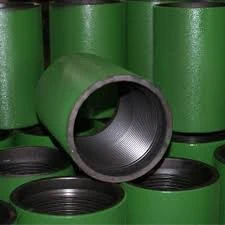- Afrikaans
- Albanian
- Amharic
- Arabic
- Armenian
- Azerbaijani
- Basque
- Belarusian
- Bengali
- Bosnian
- Bulgarian
- Catalan
- Cebuano
- Corsican
- Croatian
- Czech
- Danish
- Dutch
- English
- Esperanto
- Estonian
- Finnish
- French
- Frisian
- Galician
- Georgian
- German
- Greek
- Gujarati
- Haitian Creole
- hausa
- hawaiian
- Hebrew
- Hindi
- Miao
- Hungarian
- Icelandic
- igbo
- Indonesian
- irish
- Italian
- Japanese
- Javanese
- Kannada
- kazakh
- Khmer
- Rwandese
- Korean
- Kurdish
- Kyrgyz
- Lao
- Latin
- Latvian
- Lithuanian
- Luxembourgish
- Macedonian
- Malgashi
- Malay
- Malayalam
- Maltese
- Maori
- Marathi
- Mongolian
- Myanmar
- Nepali
- Norwegian
- Norwegian
- Occitan
- Pashto
- Persian
- Polish
- Portuguese
- Punjabi
- Romanian
- Russian
- Samoan
- Scottish Gaelic
- Serbian
- Sesotho
- Shona
- Sindhi
- Sinhala
- Slovak
- Slovenian
- Somali
- Spanish
- Sundanese
- Swahili
- Swedish
- Tagalog
- Tajik
- Tamil
- Tatar
- Telugu
- Thai
- Turkish
- Turkmen
- Ukrainian
- Urdu
- Uighur
- Uzbek
- Vietnamese
- Welsh
- Bantu
- Yiddish
- Yoruba
- Zulu
Understanding the Distinctions Between Casing and Tubing in Oil and Gas Operations
The Differences Between Casing and Tubing in Oil and Gas Production
In the oil and gas industry, casing and tubing are two essential components that play critical roles in the drilling process and the overall production of hydrocarbons. Although they are often referenced together, they serve distinct purposes and have different characteristics. Understanding the differences between casing and tubing is crucial for engineers, geologists, and workers in the field to ensure the safe and efficient extraction of oil and gas.
Definitions
Casing is a series of pipes that are installed in the drilled wellbore to provide structural integrity and prevent the surrounding formations from collapsing. It also serves as a conduit for the fluids produced (oil, gas, and water) to surface. Casing comes in various sizes and types, designed to withstand high pressures and prevent any contamination of groundwater or other formations.
On the other hand, tubing is a smaller diameter pipe used to transport the hydrocarbons from the reservoir to the surface after they have been brought to the wellbore by the pressure of the formation or by artificial lift methods. Tubing is designed to handle the fluid flow and operate under specific pressure conditions.
Purpose and Application
The primary purpose of casing is to stabilize the well and isolate different pressure zones within the subsurface environment. This ensures that fluids do not migrate from one formation to another, which could result in unsafe conditions such as blowouts or cross-flow between different aquifers or oil-bearing formations. There are different types of casing such as conductor casing, surface casing, and production casing, each placed at different depths and serving various functions.
Conversely, tubing is used primarily for the production phase and is installed after the casing is in place. It allows for efficient production of oil and gas, acting as a conduit for these resources to flow to the surface. Tubing can be removed and replaced to accommodate changes in production requirements or repair operations, making it a flexible component in the extraction process.
what are the differences between casing and tubing?

Material and Design
Casing is typically made from carbon steel, and its wall thickness varies based on the depth of the well and the pressure it must withstand. Casing comes in larger diameters compared to tubing, and its design needs to endure the rigors of the drilling process, including the unpredictable pressures found at great depths.
Tubing, while also usually made from steel, is constructed to lighter specifications than casing, given that it does not need to support the weight of the entire wellbore. The diameter of tubing is significantly smaller, optimizing it for fluid transport. Additionally, tubing can be outfitted with various fittings and valves to manage the flow of produced hydrocarbons effectively.
Installation Process
The installation processes for casing and tubing are also distinct. Casing is installed after drilling to a certain depth and is cemented in place to create a stable and sealed environment. This cementing process involves pumping cement down the casing and up the annular space surrounding it, creating a solid barrier against fluid migration.
In contrast, tubing is typically installed after casing has been cemented and the well has been completed. The tubing string is lowered into the well, and it may be accompanied by a variety of completion tools and equipment designed to optimize production.
Conclusion
In summary, casing and tubing play vital but different roles in oil and gas production. Casing provides structural integrity to the wellbore and isolates pressure zones, while tubing facilitates the production of hydrocarbons to the surface. Understanding these differences is essential for everyone involved in the drilling and production processes, as they are integral to the safety, efficiency, and success of oil and gas extraction operations. By recognizing the unique functions and requirements of casing and tubing, industry professionals can ensure optimal performance and mitigate risks associated with hydrocarbon production.
-
Tubing Pup Joints: Essential Components for Oil and Gas OperationsNewsJul.10,2025
-
Pup Joints: Essential Components for Reliable Drilling OperationsNewsJul.10,2025
-
Pipe Couplings: Connecting Your World EfficientlyNewsJul.10,2025
-
Mastering Oilfield Operations with Quality Tubing and CasingNewsJul.10,2025
-
High-Quality Casing Couplings for Every NeedNewsJul.10,2025
-
Boost Your Drilling Efficiency with Premium Crossover Tools & Seating NipplesNewsJul.10,2025







